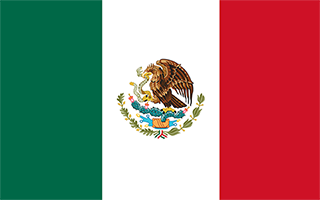Facts and Data
Webpages:
Official Unesco Page
Rock Paintings of the Sierra de San Francisco (INAH)
Basis Data:
Unesco World heritage since: 1993
Size of heritage: 182,600 ha
Coordinates:
Longitude: -111,084°
Latitude: 27,656°
Summary
From c. 100 B.C. to A.D. 1300, the Sierra de San Francisco (in the El Vizcaino reserve, in Baja California) was home to a people who have now disappeared but who left one of the most outstanding collections of rock paintings in the world. They are remarkably well-preserved because of the dry climate and the inaccessibility of the site. Showing human figures and many animal species and illustrating the relationship between humans and their environment, the paintings reveal a highly sophisticated culture. Their composition and size, as well as the precision of the outlines and the variety of colours, but especially the number of sites, make this an impressive testimony to a unique artistic tradition.
Location on Map
Show bigger map on Openstreetmap
Rock Paintings of the Sierra de San Francisco
The Rock Paintings of the Sierra de San Francisco is a UNESCO World Heritage site located in the state of Lower California Sud Municipality, Mexico. This remarkable site is renowned for its extensive collection of prehistoric rock art, which provides valuable insights into the lives and beliefs of the indigenous people who inhabited the region thousands of years ago.
History
The rock paintings in the Sierra de San Francisco date back to between 1000 and 1300 AD and were created by the Cochimi and Guachimis tribes. These ancient paintings depict a wide range of subjects, including humans, animals, plants, and geometric patterns. The art was created using natural pigments made from minerals, plants, and animal products, and applied to the rock surfaces using brushes, fingers, or blowing techniques.
The exact purpose and meaning behind these rock paintings remain a mystery, as there are no written records from the time. However, it is believed that they served various functions, including religious rituals, storytelling, and documenting important events in the lives of the indigenous communities.
Current State
The Rock Paintings of the Sierra de San Francisco have faced numerous challenges over the years, including natural erosion, vandalism, and looting. However, efforts have been made to preserve and protect this invaluable cultural heritage.
Today, access to the rock art sites is strictly regulated to prevent further damage. Visitors must obtain permits and be accompanied by trained guides to ensure the preservation of the paintings. Additionally, the local communities have been actively involved in the conservation efforts, recognizing the importance of these ancient artworks to their cultural identity.
Conservation measures have included the construction of protective shelters and barriers to shield the paintings from the elements and human interference. Ongoing monitoring and maintenance are carried out to ensure the long-term preservation of the rock art.
Furthermore, educational programs and awareness campaigns have been implemented to promote the significance of the Rock Paintings of the Sierra de San Francisco. These initiatives aim to foster a sense of appreciation and respect for this unique cultural heritage among both locals and visitors.
The UNESCO World Heritage designation has played a crucial role in raising international recognition and support for the preservation of the site. It has also facilitated collaborations between local authorities, indigenous communities, and international organizations to ensure the sustainable management and conservation of the rock paintings.
The Rock Paintings of the Sierra de San Francisco stand as a testament to the rich cultural heritage of the indigenous peoples of Mexico. Their preservation not only safeguards the past but also provides a source of inspiration and knowledge for future generations, fostering a deeper understanding of the diverse and ancient cultures that once thrived in this region.
